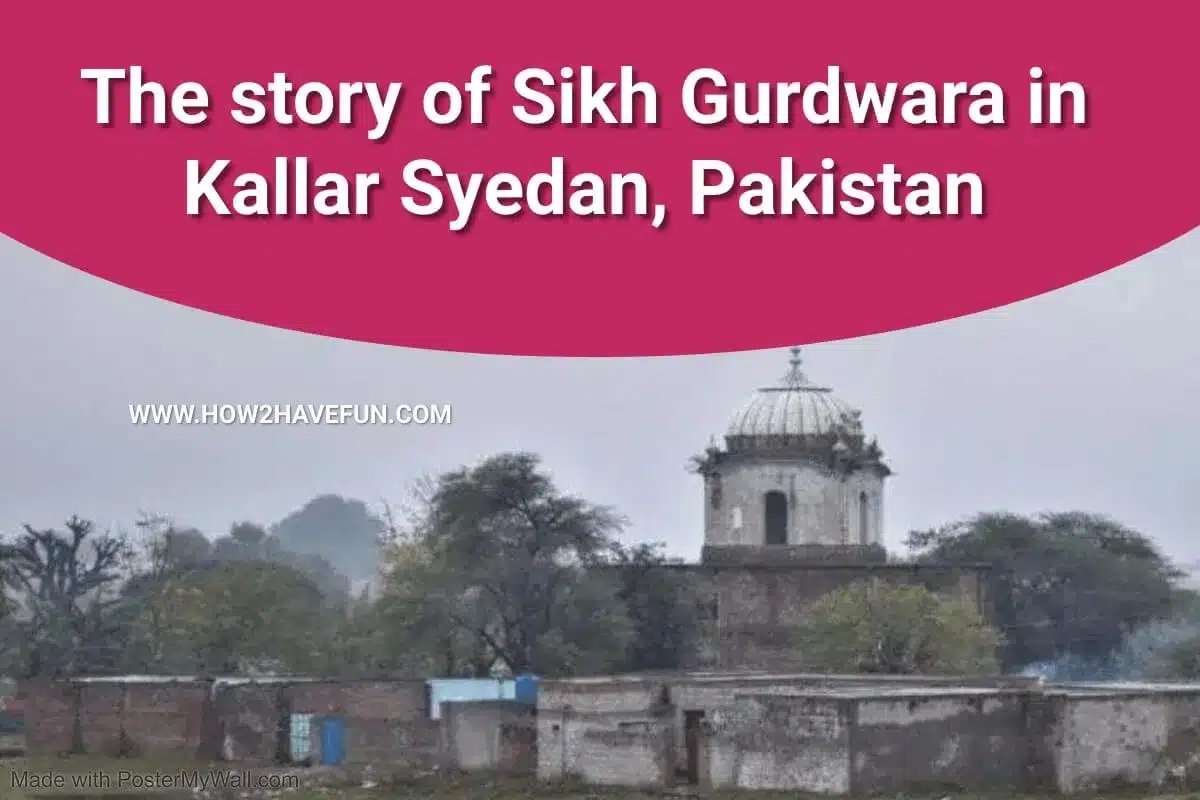


Before I get to the horrific story of the Sikh Gurdwara in Kallar Syedan Pakistan, let me take you back a bit.
.jpg)
Prior to 1947, the Muslim population of region that is now Azad Kashmir, was sick of their Hindu-Dogra ruler. This was because of his excessive taxation to please the British and his repeated use of terror to suppress rebellion.
.jpg)
When in 1947, Mr. Jinnah gave Muslims of West-Punjab political power for the first time in two centuries, the carefully erected British façade of controlling majority (Muslims) with a friendly minority (Sikh and Hindus), came to a violent end. The Sikh communities’ frontier towns like Kallar Syedan, Kanoha, Thoa Khalsa, Choa Khalsa, Dukh Panjini and Doberan Kalan were wiped out within days.
.jpg)
The stories I hear 70 years after the massacres took place still reverberate in these communities’ like it happened yesterday. It’s like a wound that still festers. Rapes, mob killings, drownings, lootings, abductions and mercy killings’ to safe family honor were all happening in the days leading up to August 1947. Sikhs, were relegated from being the king makers to the enemy’s (Hindus) collaborator.
.jpg)
While the British were in power, the Hindus of Potohar and Punjab in general adapted to the power structure by donating one son to the Sikh cause in West Punjab. The Sikh son joined the military and the Hindu family got their influence from him. Muslims did nothing of the sort and were left out of the game.
.jpg)
After 1947 the Hindus incorporated the Sikh faith in to their constitution, as a part of Hinduism. But was merging East-Punjab with India a sensible political move by the Sikh elders of West Punjab? Quite arguably the answer is no!
.jpg)
It didn’t have to be this way. Baba Guru Nanak in 15th century had preached a religion that was supposed to be a bridge between Hindus and Muslims of India. Why would he go through the pains of memorizing the Quran, performing the rituals of Haj and keeping a Muslim companion (Bhai Mardana)? The later day Sikhs’ adopted a more puritanical line, and more syncretic with the Hindu religion, totally ignoring their Muslim aspects.
.jpg)
Well there you have it. Thousands of West Punjabi Sikh were killed because of one wrong political move.
It was painful to hear the stories of killings and it was equally painful to see the wretched poverty of the community that lost its most bright and industrious stars. The culture of self-governance, community living and civility left with the educated Sikh and Hindus of Potohar. The only consolation prize the desperately poor Muslim communities got was the gold they pried off the dead corpses of the non-Muslims. The unfortunate victims were dumped into ablution wells of Gurdwara and killed in the far flung communities out of Kallar Syedan.
.jpg)
I estimate several hundred Sikh families were killed in Thoa Khalsa, Choa Khalsa, Dukh Panjini and Doberan Kalan. Most of the Sikh residents of cities and major towns like Punja Sahib and Baba Khem Singh Haveli parted ways peacefully.
.jpg)
I quickly went to Kanoha to see something beautiful for a change and lo and behold a beautiful, blue eyed, Kashmiri refugee lady standing in front of the gorgeous Kanoha Gurdwara.
.jpg)
Kanoha Gurdwara was sanctified by Sant Atar Singh Jee (in 1892) and built by Sant Tej Singh Jee (in 1935). It was called Gurdwara Tapiana Sahib, because of the Tapas of Sant Sahib in the Acacia jungle and pond of Kanoha (Palahi de Jhangi). The Tapas pond is nearly gone too along with the forest.
.jpg)
The good news about the Gurdwara is that the Sikh community of this area was rescued by the army in 1947 while it was still under siege by an angry mob. The army had to kill a few to get them to let the Sikh families leave. While the Sikh were waiting for help to arrive, they kept firing from the roof top dome of this fort like Gurdwara.
.jpg)
To shake of the sounds of shrieking women and children jumping into Dukh Panjini Gurdwara well from my head, we took an off road route to the calm and serene phalina noor dam and chilled there for a while.
.jpg)
I would’ve loved a cup of hot tandoori tea there in the chilly December wind, but I remembered we had already had one “karak chai cheeni rok ke, Patti thok ke” in the morning along with sizzling tandoori parathas from Mianjee restaurant on GT road.
Remind me never to go looking for miserable stories next time.